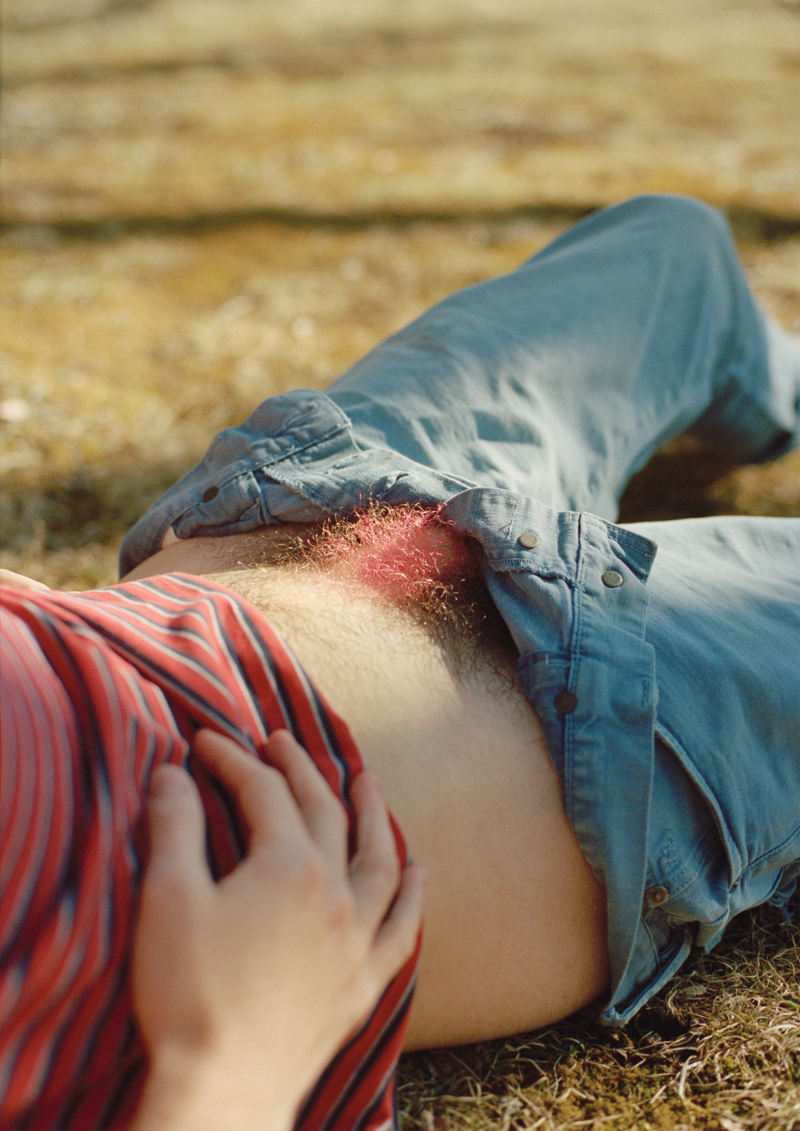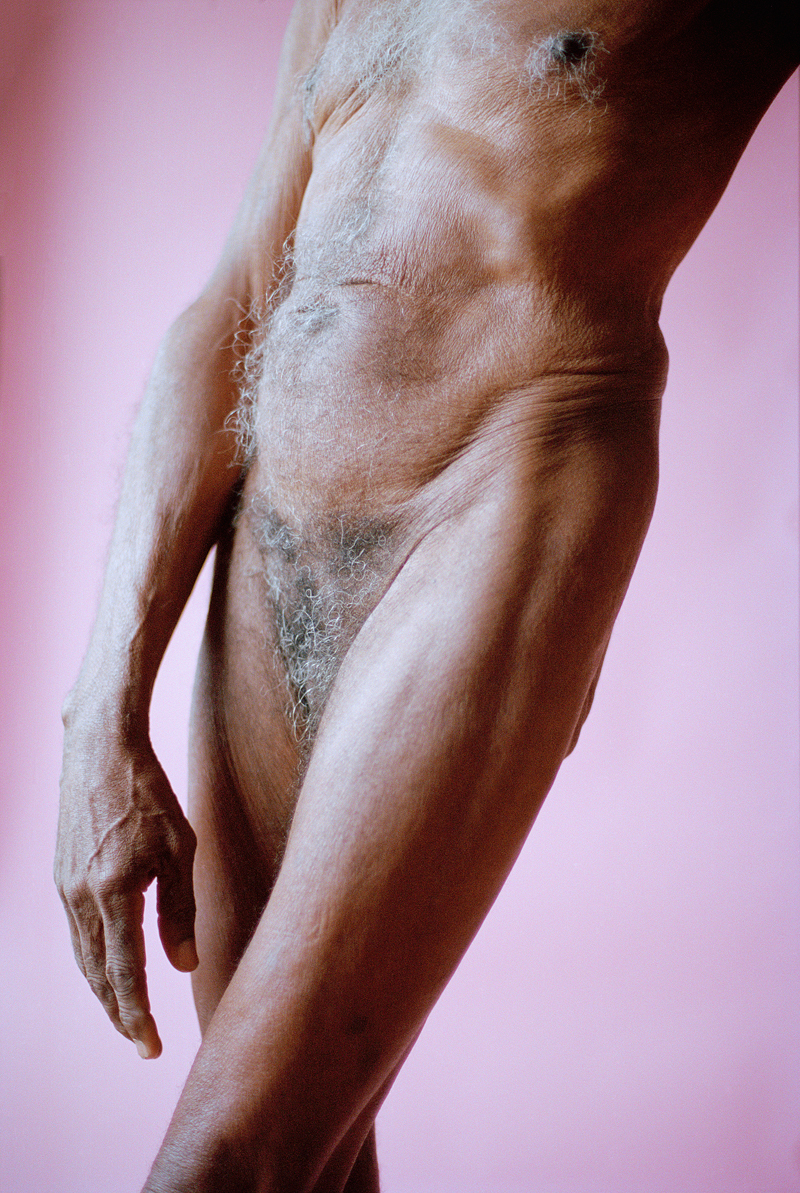Joshua Aronson (b. 1994, Toronto, Canada) is a Canadian-American photographer based in New York, originally from Miami Beach. He got his start directing music videos and taking photos of his friends, musicians and artists in Miami. He earned a Bachelor of Arts in Philosophy at Northwestern University. Selected publications include The New York Times, Dazed, Brick Magazine, and i-D. Selected clients include SSENSE, Off-White ℅ Virgil Abloh, Dev Hynes/Nelly Furtado, BMW and IMG.



With Mine Dyed Blue
New York-based photographer Joshua Aronson, whose series on young, emerging artists brought him attention from publications including The New York Times, Aint-Bad and i-D, announces his first solo show, titled “With Mine Dyed Blue”, opening in the small town of Nizhny Tagil, Russia at the Nizhny Tagil Museum of Fine Arts together with SPACE PLACE Gallery on October 27, 2018.
In a continuation of his documentation of subcultures, Aronson in this exhibition brings his unique photographic approach to documenting a new kind of subculture made up of individuals who dye, cut and style their body hair in alternative ways. Each photograph on display will take a playful approach to exploring individuality and identity, together asking how one can celebrate an individual’s body without a sexual gaze. By subtly changing the mechanisms of perception via unique poster prints and mixed media formats, Aronson makes small changes to the traditional photo gallery landscape, creating unexpected dialogues across bodies of different race, gender and age.
Drawing inspiration from music and bedroom culture, Aronson’s photographs as a whole intentionally mirror the structure and form of a carefully curated mixtape. His exhibition is more a collection of remixes and experiments than final cuts and hit singles. On this approach, Aronson says: “I wanted to direct attention away from the final product, i.e. the photographic prints, and towards my process. I’m interested in the ways in which my youth and my age can inform the way I make work and engage with the world today.”
“With Mine Dyed Blue” marks the first solo show for Aronson, who’s previously exhibited works in group shows in New York, Miami, London and Los Angeles.

NH: You mention that you want this project to highlight your youthful perspective and your process more than the final results. Can you walk us through your process a little bit more?
How did you go about finding your subjects?
JA: I’m interested in working with subjects who are comfortable with making this very private thing—their body hair—very public. There’s something that happens in the exchange from private to public that calls attention to the madeness of an image and I wanted that. I was thinking about that and how public things, such as bridges or buildings, are typically made by groups of people, whereas private things, such as bedrooms or confessional booths, are kind of the opposite. They’re typically designed by an individual. I wanted to work with subjects who were comfortable with revealing their private space because I wanted to use that private space as a way to highlight the individual behind the madeness of the image. This emphasis on the individual—it’s about bringing you in. I wanted to bring you into it, to let you inside this world I was creating.
NH: Hair has different purposes, connotations, cultural stigmas and reactions. What inspired you to focus your exploration of the human body through pubic hair?
JA: I’m inspired by the way in which body hair is something that is seen and not looked at, not examined—at least not in a way that isn’t overtly sexual—and why? Why is such an essential element of the human body so easily overlooked? When I looked a little closer, I found that objects like these—that are seen and not looked at—could make for ideal frameworks for exploring different ideas of how an image is made. In the same way that you may look at a painting of an American Flag or a Stop Sign and notice less about the flag than you do about the way the flag is painted, I thought you could confront pubic hair, notice this thing, see it but not look at it, and, rather, investigate the way in which it’s being photographed. I wanted a way to play with what it meant for me to photograph something. To make an image. I‘m using hair as a way to work through it. To coming to understand what I had to say in that moment.


NH: It seems fitting to have an exploratory project deal with hair, since its transitory nature allows it to be the perfect subject for experimentation. Did that have anything to do with your process?
JA: Dye and the process of dying your hair—it’s a literal experiment. I’m attracted to the way in which dye expresses this fluidity, this you-can-be-whoever-you-want-to-be mentality. My photographs of dyed pubes are about acceptance. I wanted to make images that let you accept yourself. I want you to accept that it’s okay to experiment. Dye to me reflects this because it’s a major tool of an aesthetic of ownership, of identity and of becoming—but, also, of stripping away. I really liked the way it felt to dye my hair, and I ultimately just wanted to share that. To go through it together. To take this public thing—of dying the hair on my head—and bring it to a private space—somewhere right below my waist. I wanted to know what it meant to alter the look of a private space. To show that to someone.
NH: You consider this a documentation of a subculture. How did you stumble upon this subculture and how did that encounter impact you?
JA: I didn’t stumble upon this subculture because I invented it. I had a feeling about this type of person and I just followed it. Bringing together a group of people dying, cutting and styling their body hair felt right to me. I had this idea and just brought it wherever I went. I remember being in Berlin, with a carry on bag, giving up space in it to fit a box of dye and a bottle of bleach because I wanted to do this. I thought this type of image was something I wanted to see and I went for it. I wanted to put it out in the world and I was willing to do anything—even create a community, invent a new subculture—in order to do it.
NH: Was the project strictly documentation or was there creative collaboration happening between you and your subjects?
JA: My work is, in many ways, about a creative collaboration between photographer and subject. I’m interested in the way in which chance can make its mark on my photographs, so I open up the floor to collaboration as a way to allow chance to make its mark in that way—by way of my subjects.
NH: How did you make the decision to exhibit this work in the small town of Nizhny Tagil, Russia?
JA: The opportunity to show in Nizhny Tagil came by an email. It was a “this only happens in 2018” type of moment. I said yes because I was interested in the way in which these images could live in a different context. Nude American bodies in Russia? I got the offer and went for it.


To view more of Joshua Aronson’s work please visit his website.